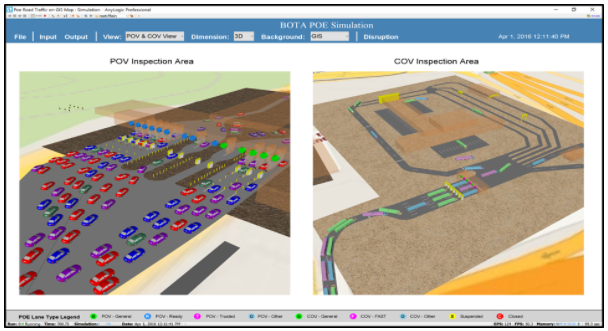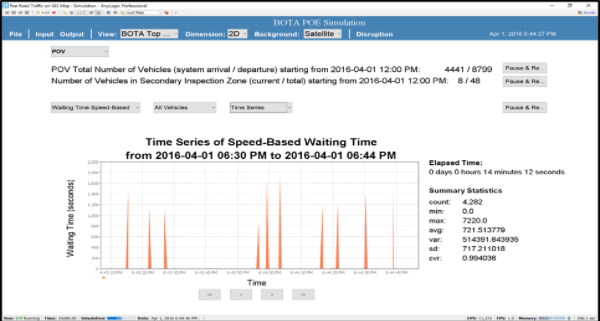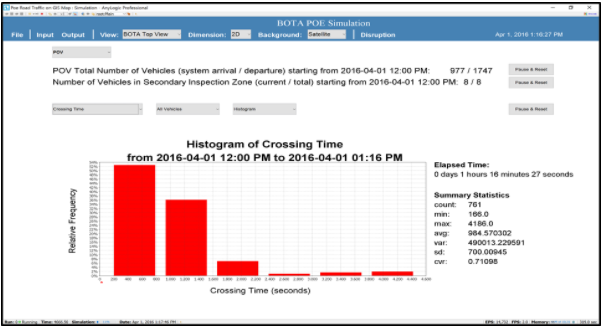Invention Summary:
Fast and sustained secure flows of people and freight through a Port-of-Entry (POE) are essential to the U.S. economy. Excessive delays not only inconvenience passengers, but also disrupt supply chains downstream the POE, often causing severe economic damage. In addition, they elevate carbon footprint resulting in environmental and public health impacts.

US Custom and Borders Protection (CBP)—a component of the Department of Homeland Security (DHS)—has been responsible for facilitating vehicular and pedestrian traffic so as to minimize crossing times without compromising security inspections. Accordingly, DHS has funded work on solutions that provide a flexible simulation environment and models of US POEs to analyze and optimize POE lane configurations and staff allocation with the aim of keeping waiting times as low as possible.
Port-Of-Entry Simulation System (POESS)
Researchers at Rutgers University are part of a project team (funded by DHS) that is working on solutions for CBP. They have developed a modeling methodology and are developing a suite of detailed simulation models of POEs (the POESS simulation software) for computing performance metrics and studying hypothetical “what-if” scenarios. The project supports future planning of POE evolution (typically expansion and handling of traffic surges) and contains facilities, such as a dynamic editor and traffic animation, for flexibly studying hypothetical “what-if” issues such as changes in POE configurations and operating parameters, as well as disruptions in the form of road and plaza obstructions. POESS creates 3D and 2D simulation models layered over a realistic geographic map of the POE and its vicinity with animated traffic and dynamic statistics displays. The models are easy to use and readily understood by users and observers. Each simulation model serves as a decision support system (DSS) helping POE stakeholders analyze and optimize their POE operating decisions. Emphasis is placed on vehicle/pedestrian waiting and crossing times of both privately-owned vehicles (POV) and commercially-owned vehicles (COV).
Unique Features:
An easy to use Graphical User Interface that:
- Provides the ability to experiment using “what-if” scenarios, such as traffic surges and disruptions.
- Supports dynamic configuration of POE lanes, traffic schedules, and inspection personnel schedules.
- Simulates animated traffic for enhanced understanding of POE dynamics.
- Displays dynamic statistics as the simulation is running.


Benefits
A proven modeling methodology, exemplified by the first POESS model for the Bridge of the Americas (BOTA) Port of Entry. The pace of creation of new POE models will henceforth increase due to code re-use.
Intellectual Property & Development Status: Available through license or distribution agreement.
The POESS software is available in source code and as java apps, but running it only requires a Java Runtime Environment. Modifying the POESS code requires the AnyLogic commercial software platform.